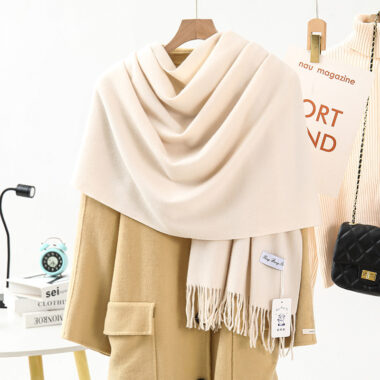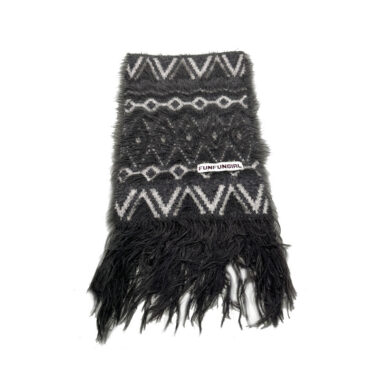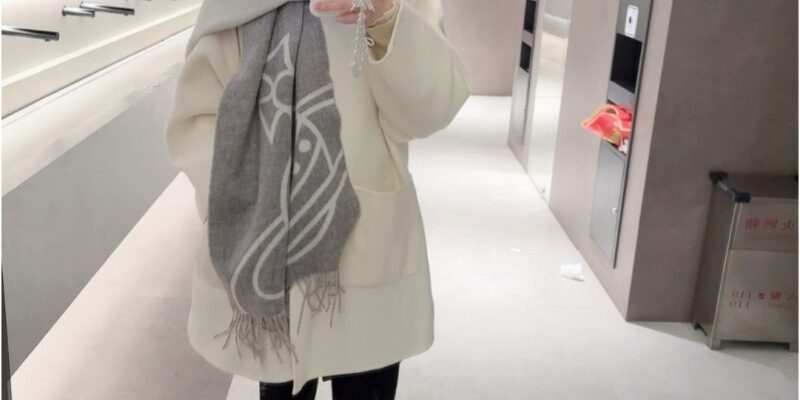Scarves have a fascinating history that spans centuries, evolving from a practical accessory to a fashionable statement piece. Here’s a look at how scarves have transformed over time:
1. Ancient Civilizations: The Functional Origins
- Ancient Egypt (3000-1000 BCE):
- Scarves, or shawls, were used by both men and women in ancient Egypt. They served as protection from the sun, wind, and sand. Egyptian women, particularly those of higher status, wore linen scarves as a part of their attire. These scarves were often used as a symbol of wealth and social status.
- Scarves were also used for hygiene—early Egyptian women used them to keep their heads and necks clean.
- Ancient Rome:
- Romans wore a type of scarf called a “sudarium” (Latin for “sweat cloth”), primarily for hygiene. It was a piece of cloth draped over the shoulders or tied around the neck to absorb sweat. Men and women wore these functional cloths during physical activities or while in the heat.
2. The Middle Ages: Protection and Modesty
- Europe (5th to 15th century):
- Scarves continued to serve functional purposes. In the Middle Ages, they were often worn by women as part of modest attire, particularly as head coverings or veils.
- Hooded scarves or shawls were also used to protect from cold weather.
- In this period, scarves were not necessarily seen as fashionable but more as a necessity for warmth, protection, and modesty.
3. The 16th and 17th Centuries: Decorative and Symbolic
- Renaissance & Baroque Period:
- As fashion evolved, scarves began to have a more decorative role. During the Renaissance, scarves were worn by both men and women as part of elaborate costumes. They were often made of silk, velvet, or brocade fabrics.
- In the 17th century, the cravat, an early version of the modern scarf, became popular among European men, especially in France. This tied cloth around the neck became a symbol of sophistication and upper-class status. Kings, nobles, and military officers wore cravats as a mark of distinction.
4. The 18th and 19th Centuries: Fashion and Function Converge
- French Revolution & Beyond:
- The cravat evolved into the more familiar tie by the late 18th century. Men continued wearing them as part of their formal attire.
- In the early 19th century, scarves were still a functional piece, protecting from the elements. But by the mid-1800s, scarves were becoming a symbol of refinement for both men and women, often made from luxurious materials like silk and wool.
- During the Victorian Era, women began to wear scarves as part of their evening wear, pairing them with dresses to create an elegant, flowing look.
5. The 20th Century: Scarves as Fashion Statements
- Early 1900s:
- The beginning of the 20th century saw scarves become central to high fashion. Designers like Coco Chanel revolutionized how scarves were worn, using them as accessories to add color, texture, and flair to outfits.
- Hermès created its famous silk scarves in the 1930s, bringing scarves into the realm of luxury. These scarves were not just functional but pieces of art, often featuring intricate designs and vibrant colors.
- 1950s-60s: Iconic Hollywood Influence:
- Stars like Audrey Hepburn, Grace Kelly, and Marilyn Monroe popularized scarves as part of everyday fashion. Hepburn famously wore scarves with chic outfits, tying them around her neck, in her hair, or draped over her shoulders.
- The scarf became a symbol of glamour, and it was worn as a way to express individuality and luxury.
- 1970s-80s:
- The bohemian movement brought scarves into casual wear. Scarves were tied around the head, neck, and waist, often paired with flowing outfits and vibrant prints.
- In the 1980s, scarves gained popularity as a symbol of power dressing, with women like Margaret Thatcher and Princess Diana wearing scarves as part of their professional wardrobes.
6. Modern Day: A Versatile Accessory
- Today:
- Scarves have become one of the most versatile accessories in fashion, used by both men and women across the world. They are no longer just for warmth but for expression, style, and culture.
- Designer scarves (like those from Chanel, Louis Vuitton, and Gucci) remain luxury items, but scarves are also accessible to people at all price points, with varying materials like cotton, cashmere, and synthetics.
- In recent years, eco-friendly scarves made from sustainable materials like organic cotton, bamboo, and recycled fabrics have become a growing trend, reflecting the increasing consumer demand for environmentally-conscious fashion.
- Printed scarves are now often used as canvas for art, with patterns ranging from classic paisleys to modern abstract designs.
Key Takeaways:
- Scarves have evolved from a functional piece of cloth to a symbol of luxury, status, and style.
- Historically, they were used for hygiene, modesty, and protection from the elements.
- Today, scarves are not only an accessory for warmth but a statement piece in the world of fashion, seen in haute couture as well as in everyday, casual wear.
From their humble beginnings to their status as a fashion icon, scarves truly have a rich history. Do you have a favorite type of scarf or a specific era of fashion that influences your style?









